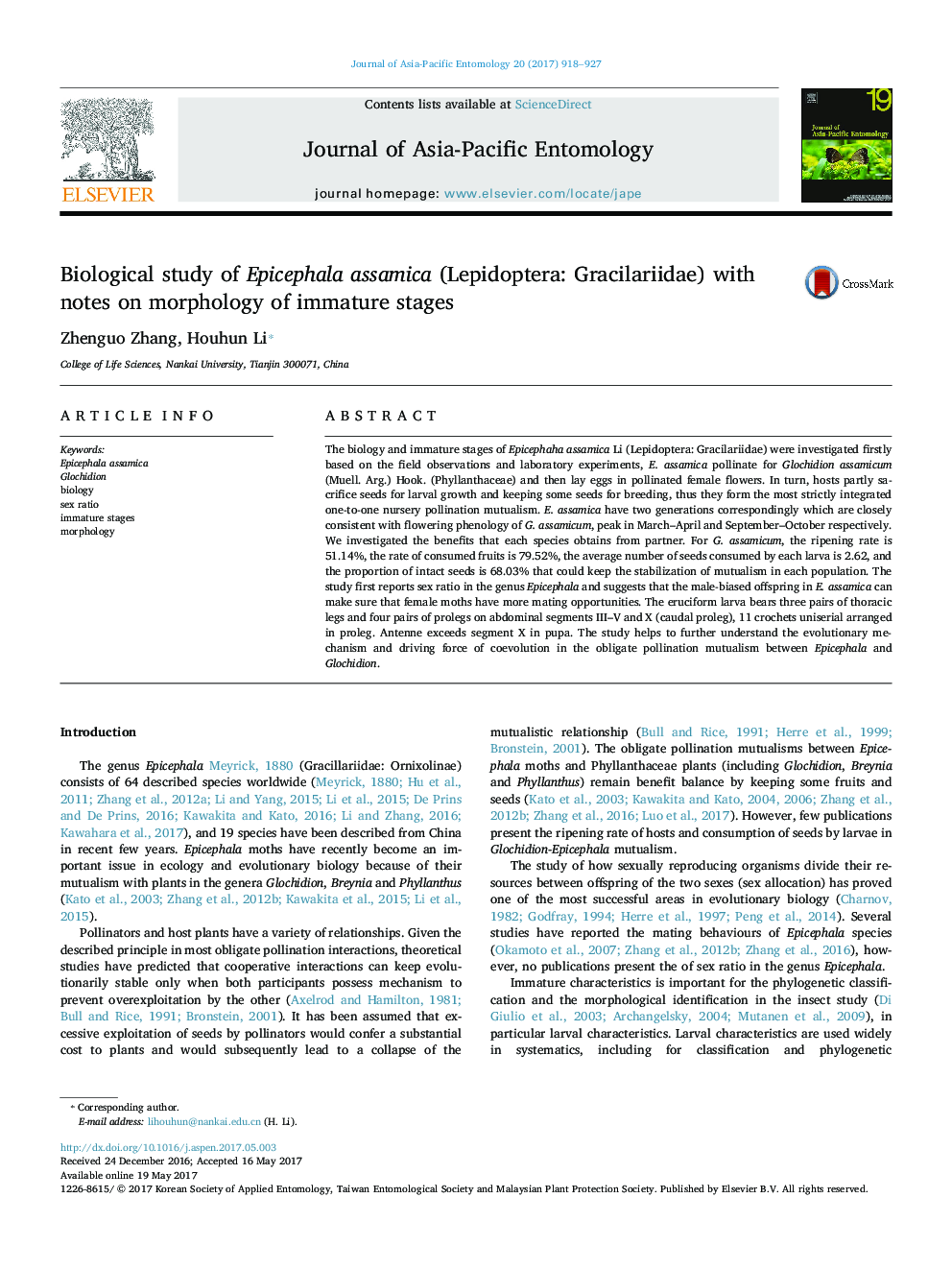| کد مقاله | کد نشریه | سال انتشار | مقاله انگلیسی | نسخه تمام متن |
|---|---|---|---|---|
| 5763516 | 1412973 | 2017 | 10 صفحه PDF | دانلود رایگان |
عنوان انگلیسی مقاله ISI
Biological study of Epicephala assamica (Lepidoptera: Gracilariidae) with notes on morphology of immature stages
دانلود مقاله + سفارش ترجمه
دانلود مقاله ISI انگلیسی
رایگان برای ایرانیان
کلمات کلیدی
موضوعات مرتبط
علوم زیستی و بیوفناوری
علوم کشاورزی و بیولوژیک
علوم دامی و جانورشناسی
پیش نمایش صفحه اول مقاله

چکیده انگلیسی
The biology and immature stages of Epicephaha assamica Li (Lepidoptera: Gracilariidae) were investigated firstly based on the field observations and laboratory experiments, E. assamica pollinate for Glochidion assamicum (Muell. Arg.) Hook. (Phyllanthaceae) and then lay eggs in pollinated female flowers. In turn, hosts partly sacrifice seeds for larval growth and keeping some seeds for breeding, thus they form the most strictly integrated one-to-one nursery pollination mutualism. E. assamica have two generations correspondingly which are closely consistent with flowering phenology of G. assamicum, peak in March-April and September-October respectively. We investigated the benefits that each species obtains from partner. For G. assamicum, the ripening rate is 51.14%, the rate of consumed fruits is 79.52%, the average number of seeds consumed by each larva is 2.62, and the proportion of intact seeds is 68.03% that could keep the stabilization of mutualism in each population. The study first reports sex ratio in the genus Epicephala and suggests that the male-biased offspring in E. assamica can make sure that female moths have more mating opportunities. The eruciform larva bears three pairs of thoracic legs and four pairs of prolegs on abdominal segments III-V and X (caudal proleg), 11 crochets uniserial arranged in proleg. Antenne exceeds segment X in pupa. The study helps to further understand the evolutionary mechanism and driving force of coevolution in the obligate pollination mutualism between Epicephala and Glochidion.
ناشر
Database: Elsevier - ScienceDirect (ساینس دایرکت)
Journal: Journal of Asia-Pacific Entomology - Volume 20, Issue 3, September 2017, Pages 918-927
Journal: Journal of Asia-Pacific Entomology - Volume 20, Issue 3, September 2017, Pages 918-927
نویسندگان
Zhenguo Zhang, Houhun Li,